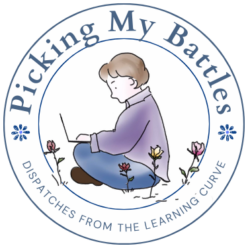For the better part of the last few decades, phonics has often been taught using an analytical approach — embedding phonics instruction into broader reading lessons with varying degrees of explicit instruction, depending on the school. Research has shown, however, that a synthetic approach – – putting explicit instruction in phonics in the center of early reading-is most advantageous for the majority of children.
I have been taking the synthetic approach to my creativity for a decade now. I exclusively set aside time to write, draw, or paint when I can. The only downside to that approach is that it fails to recognize places in which creativity is embedded in the rest of my life, and, the days that I miss the explicit, “synthetic” practice, I tend to let the day get crowded with shoulda, coulda, woulda’s and other guilt that comes from failing to meet a daily agenda.
The reality is that, for most of us, creativity is embedded in our daily lives. The synthetic practice is not unimportant, but it is not a requirement for living a creative life. Recognizing those moments of creativity — taking the analytical approach to embracing your creativity – takes its own sort of practice, however.
There is science in the teaching of reading. Perhaps there has to be because reading is not a natural act. It is something that humans invented.
Creating, however, is what makes us human. It is the most natural of activities for our species. We create to solve problems. We use things in inventive ways to entertain ourselves.
What we often failed to do, however, it is to recognize and nurture that embedded creativity.
I still am committed to making time for explicit acts of creativity, but my mission, as I start the busiest season of the year, is it to engage in daily acts of analytical creativity by being mindful of the moments when it embeds a little magic into the mundane that is daily life.
